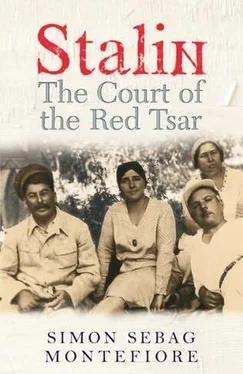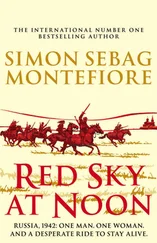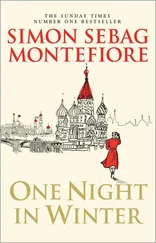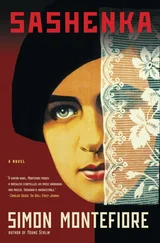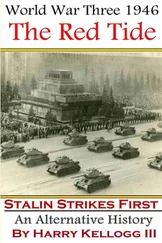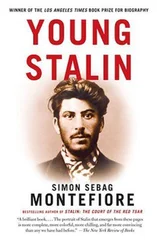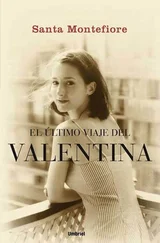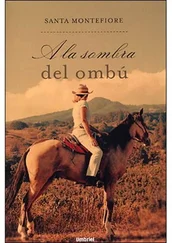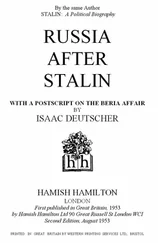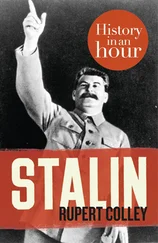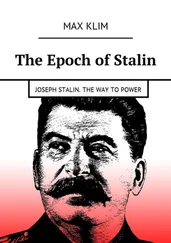The Mikoyans had so many children—five boys plus some adopted children and, in the summer, the extended Armenian family arrived for three months—that they were short of money even though Mikoyan himself was one of the top half-dozen men in Russia. So Ashken Mikoyan secretly borrowed money from the other Politburo wives who had fewer children. Mikoyan would have been furious if he had known about it, according to his sons. When Polina Molotova saw the shabby Mikoyan children, she reprimanded their mother, who retorted: “I have five boys and I haven’t got the money.”
“But,” snapped Polina, “you’re the wife of a Politburo member!” 7
This small group of idealistic, ruthless magnates, mainly in their thirties, was the engine of a vast and awesome Revolution: they would build socialism immediately and abolish capitalism. Their industrial programme, the Five-Year Plan, would make Russia a great power never again to be humiliated by the West. Their war on the countryside would forever exterminate the internal enemy, the kulaks, and return the Party to the values of 1917. It was Lenin who said, “Merciless mass terror against the kulaks… Death to them!” Thousands of young people shared their idealism. The Plan demanded a 110 percent rise in productivity which Stalin, Kuibyshev and Sergo insisted was possible because everything was possible. “To lower the tempo means to lag behind,” explained Stalin in 1931. “And laggards are beaten! But we don’t want to be beaten… The history of old Russia consisted… in her being beaten… for her backwardness.”
The Bolsheviks could “storm any fortress.” Any doubt was treason. Death was the price of progress. Surrounded by enemies, as they had been in the Civil War, they felt they were only just managing to keep control over the country. Hence they cultivated tverdost , hardness, the Bolshevik virtue. [16] Yet their self-conscious brutality coexisted with a rigid code of Party manners: Bolsheviks were meant to behave to one another like bourgeois gentlemen. Divorces were “frowned upon more severely than in the Catholic Church.” When Kaganovich wrote on the death sentence of an innocent general that he was a “slut”, he just put “s…”. Molotov edited Lenin’s use of the word “shitty” replacing it with “…” and talked prissily about using a “name not used in Party circles.”
Stalin was praised for it: “Yes he vigorously chops off what is rotten… If he didn’t, he wouldn’t be… a Communist fighter.” Stalin wrote to Molotov about “inspecting and checking by punching people in the face” and openly told officials he would “smash their bones.”
Bukharin resisted “Stalin’s Revolution” but he and Rykov were no match for either Stalin’s patronage and charm or the Bolshevik taste for recklessly violent solutions. In 1929, Trotsky travelled into exile, with a look of stunned hauteur on his face, to become Stalin’s mocking critic abroad, and his ultimate symbol of treason and heresy at home. Bukharin was voted off the Politburo. Now Stalin was the leader of the oligarchs but he was far from a dictator.
In November 1929, while Nadya studied for her exams at the Industrial Academy, Stalin returned refreshed from his holidays and immediately intensified the war on the peasantry, demanding “an offensive against the kulaks… to get ready for action and to deal the kulak class such a blow that it will no longer rise to its feet.” But the peasants refused to sow their crops, declaring war on the regime.
On 21 December 1929, at the exhilarating height of this colossal and terrible enterprise, the young magnates and their wives, weary but febrile from their remarkable achievements in building new cities and factories, blooded by the excitement of brutal expeditions against the obstinate peasants, arrived at Stalin’s Zubalovo dacha to celebrate his official fiftieth birthday, the night our story really begins. That day, the magnates each wrote an article in Pravda hailing him as the Vozhd , the leader, Lenin’s rightful heir.
* * *
Days after the birthday party, the magnates realised they had to escalate their war on the countryside and literally “liquidate the kulaks as a class.” They unleashed a secret police war in which organized brutality, vicious pillage and fanatical ideology vied with one another to destroy the lives of millions. Stalin’s circle was to be fatally tested by the rigours of collectivization because they were judged by their performance in this ultimate crisis. The poison of these months tainted Stalin’s friendships, even his marriage, beginning the process that would culminate in the torture chambers of 1937.
Stalin spent half his letters to his men losing his temper and the other half apologizing for it. He treated everything personally: when Molotov had returned from a grain expedition to the Ukraine, Stalin told him, “I could cover you with kisses in gratitude for your action down there”—hardly the dour Stalin of legend.
In January 1930, Molotov planned the destruction of the kulaks, who were divided into three categories: “First category:… to be immediately eliminated”; the second, to be imprisoned in camps; the third, 150,000 households, to be deported. Molotov oversaw the death squads, the railway carriages, the concentration camps like a military commander. Between five and seven million people ultimately fitted into the three categories. There was no way to select a kulak: Stalin himself agonized, [17] His revealing thoughts on the kulaks on his scraps of paper include: “kulaks—deserters” then, even more suggestively: “villages and slaves.” One peasant revealed how kulaks were selected: “Just between the three of us, the poor peasants of the village get together in a meeting and decide: “So and so had six horses…” They notify the GPU and there you are: So-and-so gets five years.” Only novelists and poets are really capable of catching the brutish alienation of the villages: Andrei Platonov’s novel The Foundation Pit is the finest of these.
scribbling in his notes: “What does kulak mean?”
During 1930–31, about 1.68 million people were deported to the east and north. Within months, Stalin and Molotov’s plan had led to 2,200 rebellions involving more than 800,000 people. Kaganovich and Mikoyan led expeditions into the countryside with brigades of OGPU troopers and armoured trains like warlords. The magnates’ handwritten letters to Stalin ring with the fraternal thrill of their war for human betterment against unarmed peasants: “Taking all measures about food and grain,” Mikoyan reported to Stalin, citing the need to dismiss “wreckers”: “We face big resistance… We need to destroy the resistance.” In Kaganovich’s photograph album, we find him heading out into Siberia with his armed posse of leather-jacketed ruffians, interrogating peasants, poking around in their haystacks, finding the grain, deporting the culprits and moving on again, exhausted, falling asleep between stops. “Molotov works really hard and is very tired,” Mikoyan told Stalin. “The mass of work is so vast it needs horsepower…”
Sergo and Kaganovich possessed the necessary “horsepower”: when the leaders decided on something, it could be done instantly, on a massive scale and regardless of waste in terms of human lives and resources. “When we Bolsheviks want to get something done,” Beria, a rising Georgian secret policeman, said later, “we close our eyes to everything else.” This pitiless fraternity lived in a sleepless frenzy of excitement and activity, driven by adrenalin and conviction. Regarding themselves like God on the first day, they were creating a new world in a red-hot frenzy: the big beasts of the Politburo personified the qualities of the Stalinist Commissar, “Party-mindedness, morality, exactingness, attentiveness, good health, knowing their business well” but above all, as Stalin put it, they required “bull nerves.”
Читать дальше
